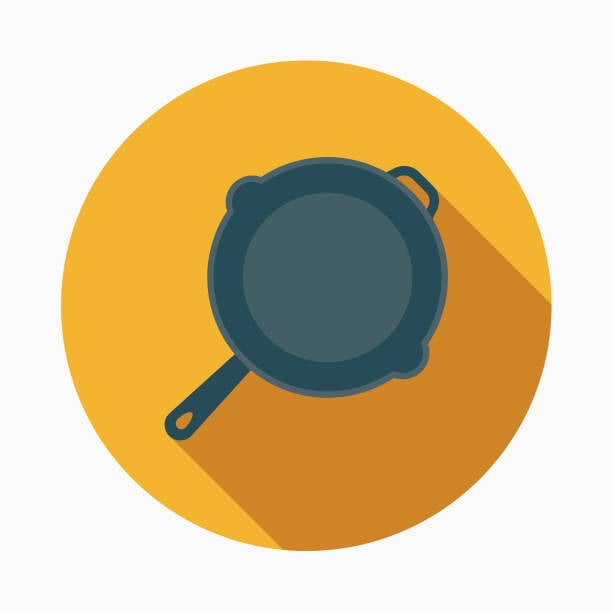Salted the tuna before throwing it in, and a thin layer of olive oil in the skillet. Then the fresh avacado on top gives it a nice creaminess…that’s something we’ve done a couple times now and really like.
- 4 Posts
- 11 Comments

 4·1 year ago
4·1 year agoAnother thing to do, if you’re not doing it already, is to use metal spatulas when you cook. You want to use ones with a straight edge and rounded corners. Then use that straight edge to scrape as you’re cooking. It’s like the opposite of a non-stick pan, that metal on metal scraping is a good sound and helps to even things out.

 3·1 year ago
3·1 year agoLooks great! Generally speaking, when I do something acidic, the skillet seems a little dull afterwards. But it comes back with use. I’ve heard seasoning described like a bank…cooking with fats and oils are deposits, acids and such are withdrawals. As long as you deposit a lot more than you withdrawal, it will all work out OK.
The height you got on that is impressive! Well done!
I don’t remember now what the recipe was, but my wife and I were making something that called for a skillet to go from stove top to oven. At the time, we only had non-stick skillets, so I bought a Lodge without knowing a single thing about cast iron. We made the recipe, I’m sure it was great…and then came time to clean that skillet. It was a nightmare! Baked on food, stuck like concrete, scrubbing, soaking, and more scrubbing…it was terrible.
I figured there had to be a better way, if this was how it was for everyone, nobody would use these pans. So I started looking around, reading articles, and learned about modern skillets with they’re pebbled surface vs. antique skillets with stone ground surfaces…and I was off and running.
I fell down the rabbit hole with Cast Iron Collector, picked up a few rusty pieces of junk at an antique fair, and set up an electrolysis tank in my driveway. Those first few pieces I restored are still ones I use today. I’ve since set up a bigger and better electrolysis tank in my basement, and restored probably 40-50 pieces…and I’ve got piles in cabinets of to be restored stuff too. Some of it I give away to family and friends, occasionally I’ll sell a piece or two, though that’s not my focus, and the rest goes into use in my kitchen.
My daily driver, as I like to call it, is a Wapak 10 that’s 100 or more years old as best as I can tell. The funny thing about that skillet is that I thought it was a Wagner 10 when I bought it because all I could read on the back side was “WA” followed by a bunch of rust. That Wapak has been a real workhorse, I’ve put it through so many meals, and it keeps coming back for more. Wapak was known for casting with thinner walls than most, so it’s pretty light weight for cast iron, and I love it…it’s a joy to cook with.
I’ve slowed down on buying new pieces in recent years, and slowed down on restoring them too…life and other priorities, ya know. But I still keep an eye out for any pile of rust when we’re out antiquing, and will pick up new pieces occasionally. I love finding a five dollar rust bucket, and then cooking dinner with it once it’s restored.
That looks delicious! Interesting skillet too…most square ones I’ve seen have the handle on one of the sides, not the corner.
Thanks! I can’t take any credit, aside from searching royalty free images.

 2·1 year ago
2·1 year agoCastironcollector.com is a fantastic resource. I’ve been collecting and restoring vintage iron for awhile now, and that site was massively helpful in getting started. I’ve got an electrolysis tank set up in my basement, and the forum users there were really helpful when I was getting started. Good luck, let us know how it goes!

 2·1 year ago
2·1 year agoOf course it is! Ever bake bread in it? That’s what most of my dutch ovens get used for

 0·1 year ago
0·1 year agoYeah, that really should do it…most of the time, “just cook with it” is the solution. You got a pic you can share to show us what’s going on?


Hmm, I wrote out a reply, but seems like it didn’t post. My apologies if you get two versions of kinda the same thing.
If you buy a modern Lodge off the shelf, it will have a pebbly surface. This is from the sand they use to cast the iron when the piece is manufactured. And in the olden days, they used to have a second step of grinding that pebbly surface smooth so it was a better cooking experience brand new. Somewhere in the 60’s, they stopped doing that as a cost saving measure (yay capitalism!)
That being said, your new Lodge skillet will get smooth with time and use. It may take a few months of daily use, or longer if you’re not using it as often. But the seasoning will slowly fill in all those little hills and valleys, and it will smooth out with use. So more expensive manufacturers have added that stone grinding step back in, and they are nicer to work with straight off the shelf. But your Lodge will get there too with time and use.